[vc_row][vc_column][vc_custom_heading text=”Water Wise It: Lawn” font_container=”tag:h1|font_size:28|text_align:center|color:%23000000″ google_fonts=”font_family:Lato%3A100%2C100italic%2C300%2C300italic%2Cregular%2Citalic%2C700%2C700italic%2C900%2C900italic|font_style:400%20regular%3A400%3Anormal” css=”.vc_custom_1492136523794{padding-bottom: 10px !important;}”][toggle_content title=”Water Wise Your Lawn: Step 1, Learn Your Lawn”][vc_udesign_content_block bg_image=”” bg_color=”rgba(255,255,255,0.01)” max_bg_width=”yes” font_color=”#000000″ content_padding=”15px 0″ class=””]
Water Wise Your Lawn: Step 1, Learn Your Lawn
Water is a precious natural resource that determines whether a region is prosperous or not. In the Inter Mountain Region we have learned how to make the desert bloom and created lush green personal landscapes despite having a very low amount of rain fall. Although water is inexpensive in Utah and we have enjoyed a lot of precipitation this winter, conserving water in our landscapes should constantly be at the forefront of our minds.
Please make sure you study the steps described here for your lawn and then go out and Water-Wise It™. Following the suggestions on this website will help you to be a good steward of the land and create a water conservation mindset that will carry through to succeeding generations and allow them to enjoy the high standard of living, which includes the beautiful green landscapes that we enjoy today.
In this first step you will gather information about your lawn that you will use in other steps to Water-Wise It™. By determining your soil type, lawn square footage, and sprinkler flow rates, you will have a good foundation to use to make yourself a lawn expert and reduce the amount of water you apply to your lawn dramatically. So, let’s get started.

Measure your Lawn
You need to know how much lawn you have in order to calculate how much fertilizer and weed/pest control to apply to your lawn. To find the square footage you multiply the length in feet by the width in feet (Length x Width). If your lawn isn’t in one rectangular piece, break the area down into smaller rectangular areas, calculate their square footage and add the totals together for the completed area of the lawn. You can use rectangles to estimate areas that are not square. The formula for finding the area of a rectangle is ½(Length x Width).
Make sure to make a note of the total square feet of your lawn so that you can use it to determine how much fertilizer, weed and pest control, and other maintenance you will need.
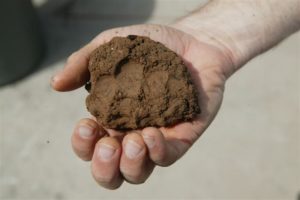
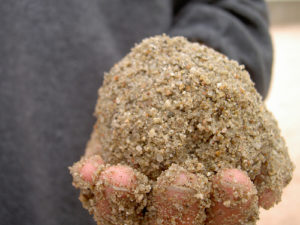
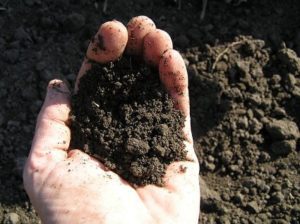
Determine Your Soil Type
Knowing what soil type your lawn is growing on will help you determine how and when to water your lawn. There are three main soil types in the Intermountain Region which are Clay, Sand, and Sandy Loam.
To figure out what type of soil you have do a quick spit test. Take a hand full of soil, spit into it (or just add some water), and mix the water in with your finger. If the soil resists balling up it is probably sandy soil. If the soil creates one big ball of mud it is likely Clay. If the mixture creates several little balls of mud it is sandy loam. Sandy Loam is the most desirable type of soil, because it retains water and resists compaction (compaction prevents moisture from filtering down through the soil). Sandy loam consists of the three materials found in soil: clay, sand, and silt. Sandy loam in contains approximately 25% clay, 50% sand, and 25% silt. Sandy loam provides the best balance of water drainage, water retention, resists compaction and allows Air, Water, and Nutrients easier access to roots.
If you would like a more scientific analysis of your soil composition you can take a sample to USU Extension services for a full soil analysis. More information can be found at http://usual.usu.edu/about/faq/index.html.
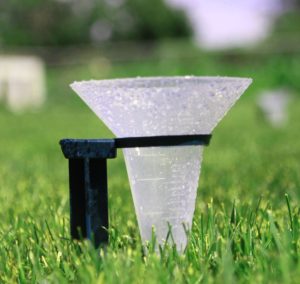
Measure the time it takes for your sprinkler to apply 1” of water
In order to decrease the amount of water you apply to your lawn, you first need to know how much water you apply. You need to determine how long it takes for your sprinklers to apply 1” of water to your lawn. You can either purchase Sprinkler Catch Cups at a local hardware store, order them online from USU at this link, or use 1” metal cans (tuna cans, cat food cans, etc) to measure your water. Sprinkler Catch Cups will let you calculate your water flow by showing you how much water is applied each time you run your sprinkler for a specified time period.
A less expensive way to determine this is to take several tuna cans or cat food cans, place them around your yard within a sprinkler station, turn on your sprinkler system and figure out how long it takes to fill up the can. Each can is approximately 1” tall. You should measure several different areas of you lawn using different stations.
Knowing how long it takes your system to apply 1” of water will allow you to easily determine how long to run your system in later Water-Wise It™ Steps. Once you figure out how long it takes your sprinklers to apply 1” of water to your lawn, if you want a real eye opener check out the watering post to determine how many inches of water you applied last year.
Move On To Step 2
Now you are ready to start Water-Wising™ your lawn. Write down the information about your soil type, square footage and watering and head to Step 2.
If you have any questions or suggestions you can email them directly to Info@waterwiseit.com or contact any of our sponsors or partners directly through the links on this page.[/vc_udesign_content_block][/toggle_content]
[toggle_content title=”Water Wise Your Lawn: Step 2, Water Your Lawn”][vc_udesign_content_block bg_image=”” bg_color=”rgba(255,255,255,0.01)” max_bg_width=”yes” font_color=”#000000″ content_padding=”15px 0″ class=””]

Step 2, Water Your Lawn
Correctly watering your lawn will decrease weeds and keep your lawn green in the heat of the summer.
When homeowners see brown spots on their lawn, far too often their first inclination is to just add water, thinking that will fix it. But increasing water on lawns can create many problems including a thicker thatch layer, increased saline levels caused by surface evaporation and wasteful runoff. The average homeowner in Utah applies 50-90″ of water each year. Cool season lawns can be maintained a verdant green, even in the heat of summer, using as little as 20″ of water. Understanding your lawn and what it needs to thrive is imperative to maintaining a water-wise lawn.
How cool season grasses grow
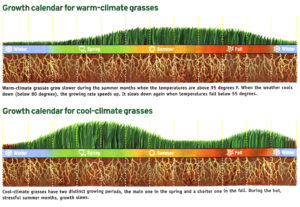
As you can see by this chart, cool season grasses have a cyclical growth pattern that is accelerated in the Spring and the Fall, with increased root and blade growth happening most rapidly Mid-Spring and Late Fall. Therefore, it follows that your lawn will respond best to changes in watering during these time periods. It will be more difficult for your lawn to respond to changes in watering when average temperatures rise above 85 degrees, so think about changing your watering habits early in the growth cycle to get the best results.
Watering your lawn in optimal conditions
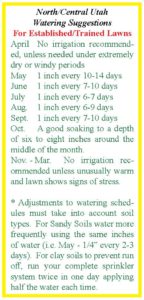
When your lawn is growing on Sandy Loam Soil and does not have a slope of more than 15% you should be able to apply the recommended amount of water in one cycle. In order to maintain a Water-Wise Lawn you must NEVER SET YOUR CONTROLLER AND FORGET IT! Your lawn will need different amounts of water monthly depending on temperature and natural precipitation. Run your sprinkler system only when you observe that your lawn needs it. The guide to the left is a suggestion based on a typical year of precipitation in Utah.
Using your calculations of how long it takes for your sprinklers to apply 1 inch turn on your system to run a cycle when necessary. One spot in your lawn will usually start turning a blue-gray before the rest signalling the need for water. Also, if you walk across your lawn and can still see your footprints one minute later it is a signal that the blades are losing their cellular structure and need additional water. You can also easily test how much water is in your soil by inserting a screwdriver into the soil. If the shaft can easily be pushed in to the handle you should probably wait to water until the soil has dried out a bit.
Whenever you are watering try to apply the amount of water recommended in one cycle, as long as your landscape will allow it. 1″ every 6-7 days will promote deeper roots much better than 1/3″ every 2-3 days. Watering deeply and infrequently will fill up the water table giving your lawn a reason to reach deeper in to the soil and access a greater water table.
How soil affects your watering
Sandy Loam, Clay, and Sandy soil beds all retain and filter water differently. That is why it is important for you to know what type of soil your lawn is growing on. Sandy Loam soil is the optimal soil type because it retains water and resists compaction which in turn permits filtration of water throughout the soil bed.
Clay soil compacts easier than sandy or sandy loam soil and filters water much slower so run off can occur quicker with clay soil. In order to follow the watering schedule for clay soil, decrease the time of your cycle so that you don’t get any run off and then run your cycles multiple times the same day to get the amount of water recommended. For instance, if your sprinklers take 45 minutes to apply 1″ of water and you notice run off around the 20 minute mark, run your sprinklers for 15 minutes and run the system 3 times in one day. This will allow the water to filter into the soil, then create an air pocket that will push water further into the soil once the second cycle starts, and so forth. Strive to maintain the same amount of days between watering if you have clay soil.
Water filters most quickly through sandy soil. Once it drops below the lawn’s root system it is inaccessible to your lawn. For sandy soil you should watch your lawn and increase the frequency of watering while maintaining the amount. For instance, instead of 1″ every 6-7 days, apply 1/4″ every 2 days.
How to train your lawn to thrive on less water
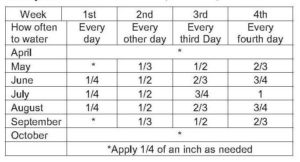
If you are watering more frequently or in higher amounts than is recommended on the chart above you can start training your lawn by increasing the days between watering, maintaining the amount of water you are currently applying. Once the lawn adjusts to the new schedule you can start decreasing the amount of water you are applying. Adjusting every 1-2 weeks should allow your lawn enough time to change its drinking habits. You can start training your lawn by figuring out where you are on this New Sod Watering Schedule and starting to move to the right on the chart.
Water-Wise Lawns use only 20-24″ of water
By following the Cool Season Lawn Watering Schedule above you should be able to decrease the water you apply to you lawn by a considerable amount. It is necessary to know how much water your soil profile will hold without runoff and water deeply and infrequently. This will promote deeper root systems and healthier grass.
Utah publishes a Weekly Watering Guide which can help you know how much water to apply to your lawn. USU also provides a free Water Check which will help you determine specific parts of you landscape where you can increase your water efficiency.
For your lawn, if you have questions or want to more about how to Water-Wise It™ please email us at info@waterwiseit.com.[/vc_udesign_content_block][/toggle_content]
[toggle_content title=”Water Wise Your Lawn: Step 3, Fertilize Your Lawn”]
[vc_udesign_content_block bg_image=”” bg_color=”rgba(255,255,255,0.01)” max_bg_width=”yes” font_color=”#000000″ content_padding=”15px 0″ class=””]
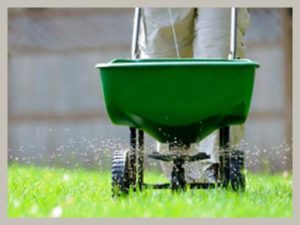
Step 3, Fertilize Your Lawn
Just like any living organism, plants all need air, water and nutrients to thrive. If you apply too much water or too many nutrients to your lawn it will be weakened. Applying the right amount of fertilizer is imperative to Water-Wising It™. Too much fertilizer and runoff can contaminate water supplies and too little fertilizer will create a weak lawn that is highly susceptible to weeds and foreign grasses.
What is in fertilizer?
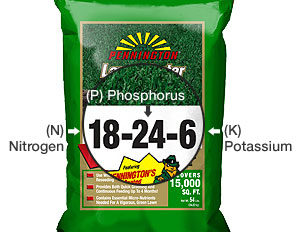 Lawn fertilizers are composed of 3 active ingredients Nitrogen, Phosphorous and Potassium (N-P-K). Nitrogen aids in overall lawn health and promotes a deep green color which helps with photosynthesis. Phosphorous is largely responsible for root growth and flower and fruit development. Potassium helps the overall functions of the plant perform correctly. Winterizer fertilizers which should be used in late fall will contain higher Phosphorous and Potassium values.
Lawn fertilizers are composed of 3 active ingredients Nitrogen, Phosphorous and Potassium (N-P-K). Nitrogen aids in overall lawn health and promotes a deep green color which helps with photosynthesis. Phosphorous is largely responsible for root growth and flower and fruit development. Potassium helps the overall functions of the plant perform correctly. Winterizer fertilizers which should be used in late fall will contain higher Phosphorous and Potassium values.
How Often Should You Fertilize?
You can choose to fertilize as little as once a year, applying a winterizer fertilizer, with higher Phosphorous and Potassium content, containing up to 4# of Nitrogen per 1,000 square feet late in the Fall (around or after Halloween). We recommend fertilizing 2-3 times a year to maintain a healthy Water Wise Lawn. You should apply approximately 1# of Nitrogen per 1,000 square feet of lawn in each application. Note that if you buy a 50# bag of fertilizer that has N-P-K values of 24-6-12 that bag contains 12.5#s of Nitrogen. Follow the chart below to determine when to apply fertilizer.

For a Water Wise Lawn, we recommend fertilizing 2-3 each year. For the late fall application use a Winterizer blend containing higher Phosphorous and Potassium. For all other applications a balanced fertilizer is recommended such as a 16-16-16 or 20-15-15.
If you apply too much fertilizer it will increase the speed of growth for your lawn which increases the amount of time and effort you will need to maintain it. This will also increase the amount of water needed for your lawn to remain healthy. It follows then that you should only apply fertilizer when your lawn shows signs of stress. If you lawn yellows quickly, has low density, or increased weeds apply Nitrogen. If you lawn shows a blue-green, purple, or red tint and doesn’t respond well to proper watering and maintenance apply Phosphorous to boost root growth. If your lawn has an overall unhealthy look apply more Potassium.
Are there natural fertilizers you can add to your lawn?
There are several natural fertilizers including Alfalfa Meal, Granite Dust and Potassium Sulfate which you can apply to your lawn to increase its health. Before adding any fertilizer it would be beneficial to have your soil tested to determine what nutrients are lacking. To learn more about natural sources of plant nutrients download this Fact Sheet from the Maine Organic Farmers and Gardeners Association.
For your lawn, if you have further questions about how to Water Wise It™ by properly fertilizing it contact us at info@waterwiseit.com.[/vc_udesign_content_block][/toggle_content]
[toggle_content title=”Water Wise Your Lawn: Step 4, Maintain Your Lawn”][vc_udesign_content_block bg_image=”” bg_color=”rgba(255,255,255,0.01)” max_bg_width=”yes” font_color=”#000000″ content_padding=”15px 0″ class=””]

Step 4, Maintain Your Lawn
In addition to watering and fertilizing your lawn, maintenance regiments can affect how much irrigation your lawn requires. Training your lawn to thrive on minimal inputs requires correct maintenance practices. All maintenance of your lawn should take into consideration how it affects the growth of the blades and roots of the grass. You should always focus on driving the roots down deeper into the soil chasing after water and nutrients. Mowing, weed and pest control and aerating will aid in deeper root growth.
Tips for mowing your lawn.
Follow these tips for Water Wising your lawn through mowing:
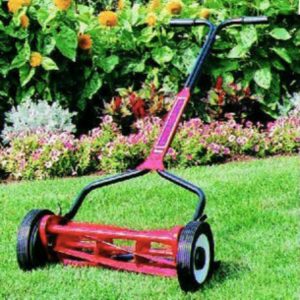 Mowing with a sharp blade will create a more healthy looking lawn and prevent the grass from going into shock. Make sure you sharpen your blade at least 2 times each year. If your blade is dull your lawn blades will show yellow at the cut tips shortly after mowing.
Mowing with a sharp blade will create a more healthy looking lawn and prevent the grass from going into shock. Make sure you sharpen your blade at least 2 times each year. If your blade is dull your lawn blades will show yellow at the cut tips shortly after mowing.- NEVER CUT MORE THAN 1/3 OF THE BLADE AT A TIME. This will put the lawn into shock which will require more water and fertilizer to maintain.
- Use a mulching lawn mower. Mulching the clippings will return water and nutrients to the lawn. Make sure you rake out any areas where clippings pile up to prevent excessive thatch buildup.
- Raise the height of your mower to 2-3″ high. Longer blades allow for more photosynthesis, shade the soil from the sun decreasing evaporation and stimulates deeper root growth.
- Alternate direction of mowing each time to prevent compaction caused by mowing.
The last mowing of the season should be the shortest to prevent snow mold. Start lowering the height of your mower during the last 4 mowings of the year. As was mentioned before, DO NOT CUT MORE THAN 1/3 of the blade at a time!
Tips for Weed and Pest Control:
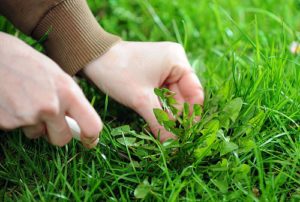
The best defense against weeds and pests in your lawn is to have a healthy root system which crowds out unwanted plants. Following proper maintenance practices will help with this. Hand weeding as soon as you notice weeds in your lawn is the most effective and environmentally friendly way to keep your lawn free of weeds. When hand weeding make sure you remove as much of the weeds root as possible to prevent it from growing back.
Applying a pre-emergent herbicide mid-spring and a post emergent herbicide with broad leaf weed control mid-summer will also help keep your lawn free of weeds.
Foreign grasses can be easily missed broad leaf weed herbicides. If you lawn is being infected by crab grass, quack grass or other barnyard grasses select a herbicide that states it is effective against those types of grasses. Quinclorac is extremely effective against annual foreign grasses, like watergrass, while leaving bluegrass, rye and fescue unharmed.
For a more detailed description of weed and pest control refer to Chapter 8 of Chanshare’s Residential Lawn Care Guide.
How often should you aerate your lawn?
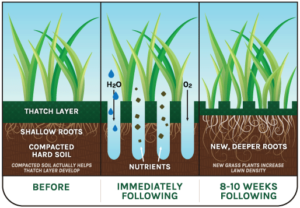
Compaction is one of the leading killers of lawns. Compaction prevents air, water and nutrients from penetrating the soil to the roots. Clay based soils are at the highest risk for compaction and should be aerated more often than Sandy Loam or Sandy soils.
Plug Aeration will loosen up soil and decrease the thatch layer allowing air, water, and nutrients easier access to the root bed. If you leave the plugs on the lawn they will break down and return the soil and nutrients to the lawn.
Aeration should happen 1-2 times per year. Spring is the recommended time for a single aeration with an additional aeration in the early fall if necessary. Sports fields, high traffic lawns, or lawns with clay based soils may need more frequent aeration.
Following these maintenance suggestions for your lawn will help you to Water Wise It. If you need further information or additional help please contact us at info@waterwiseit.com.[/vc_udesign_content_block][/toggle_content]
[toggle_content title=”Water Wise Your Lawn: Step 5, Plan For Your Lawn”][vc_udesign_content_block bg_image=”” bg_color=”rgba(255,255,255,0.01)” max_bg_width=”yes” font_color=”#000000″ content_padding=”15px 0″ class=””]
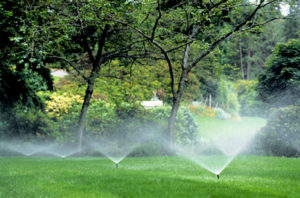
Once you have determined the soil type your lawn is growing on, calculated the amount of water you are currently applying to your lawn and determined what inputs are necessary to make your lawn thrive, you are ready to make a plan on how to Water Wise It™. To get from here to there you need to create a plan. Driving down the amount of water you put on your lawn requires continual observation of how it responds to differing inputs and adjusting your maintenance schedules.
Learning how to read your lawn will allow you to respond to its needs and let you minimize the inputs and maintenance. If your lawn doesn’t need watering, due to lower temperatures or increased natural precipitation, adjusting your timer is an easy conservation measure. If micro nutrients are making nitrogen more accessible to your lawn, you will recognize that your lawn doesn’t need additional fertilizer.
To ensure that your are consistently Water Wising your lawn follow these steps:
- Record your progress. An accurate record of your progress will help you keep your commitment and excitement for driving down your water use.
- Adjust your watering regularly. Do not set your controller and forget it! Weekly and even daily adjustments will help you to Water Wise your lawn.
- Make a plan! Once you have learned how to read your lawn and respond correctly to its needs making a plan for maintenance will help you to further minimize the amount of water you use to maintain your lawn.
Check out the other sections of our website for suggestions for how to Water Wise your landscape and technology. Please share with us your successes and contact us at info@waterwiseit.com with additional questions.[/vc_udesign_content_block][/toggle_content][/vc_column][/vc_row][vc_row][vc_column][vc_custom_heading text=”CONTACT US” font_container=”tag:h1|font_size:28|text_align:center|color:%23000000″ google_fonts=”font_family:Lato%3A100%2C100italic%2C300%2C300italic%2Cregular%2Citalic%2C700%2C700italic%2C900%2C900italic|font_style:400%20regular%3A400%3Anormal” css=”.vc_custom_1492139638551{padding-bottom: 10px !important;}”][vc_column_text]